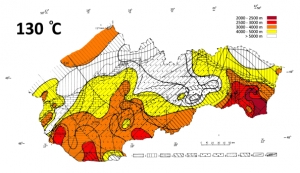Depth distribution of the reservoir temperature 160 °C for effective application of the binary cycle power plant technology in Slovakia and adjacent areas. The depths of the isothermal surface are plotted with the isoline step of 500 m.
References
Franko O., Fusán O., Král M., Majcin D., 1986. Rozloženie vysokoteplotných a strednoteplotných geotermálnych vôd a tepla suchých hornín na Slovensku. In: Geotermálna energia Slovenska a jej využitie. Geologický ústav D. Štúra, 81-92 (in Slovak)
Levashov P.P., Yakymchuk N.A., Korchagin I.N., Kutas R.I., Majcin D., Bozhezha D.N., 2012: Experience of the geothermal sources detection and mapping by mobile geophysical methods. In XIth International conference on geoinformatics - Theoretical and applied aspects, 14-17 May, 2012: proceedings. Kiev, EAGE, 2012, 5 p.
Majcin D., Kutas R.I., Bilčík D., Bezák V., 2013: Thermal conditions for geothermal energy in Transcarpathian depression. In 7th congress of the Balkan Geophysical Society: conference proceedings, 7-10 October 2013. Ed. Rami Edi. - Tirana: EAGE, 2013, 5 s. ISBN 978-90-73834-55-2.
Majcin D., Král M., Šujan M., Bielik M., Kutas R.I., Bilčík D., 2015: Thermal characteristics of the hot dry rock thermal sources in the region of Slovakia. In: Structure and thermal state of the West Carpathian lithosphere: hot dry rock energy sources potential of Slovakia. ISBN 978-80-85754-34-6. 107-124 (in Slovak)
Majcin D., Kutas R.I., Bilčík D., Bezák V., 2016: Thermal conditions for geothermal energy exploitation in Transcarpathian depression and surrounding units. Contrib. Geophys. Geod., 46, 1, 33-49.
Majcin D., Král M., Bilčík D., Šujan M., Vranovská A., 2017: Deep geothermal sources for electricity production in Slovakia: thermal conditions. Contrib. Geophys. Geod., 47, 1, 1-22.
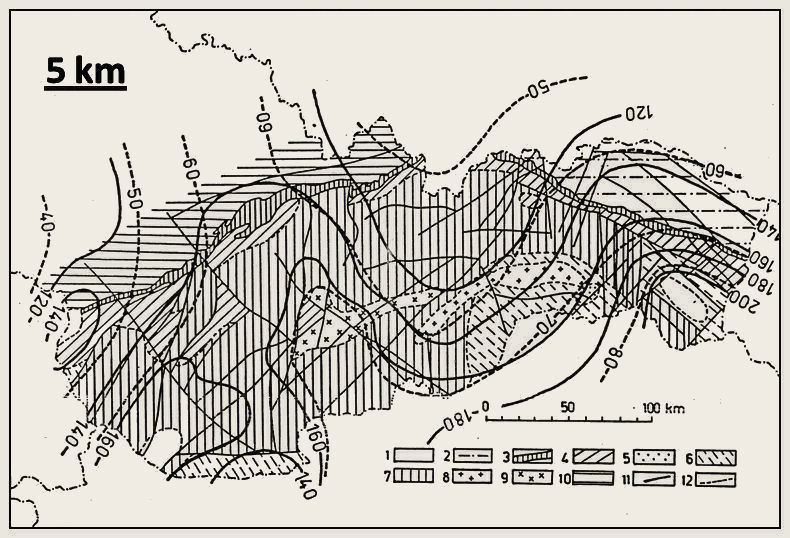
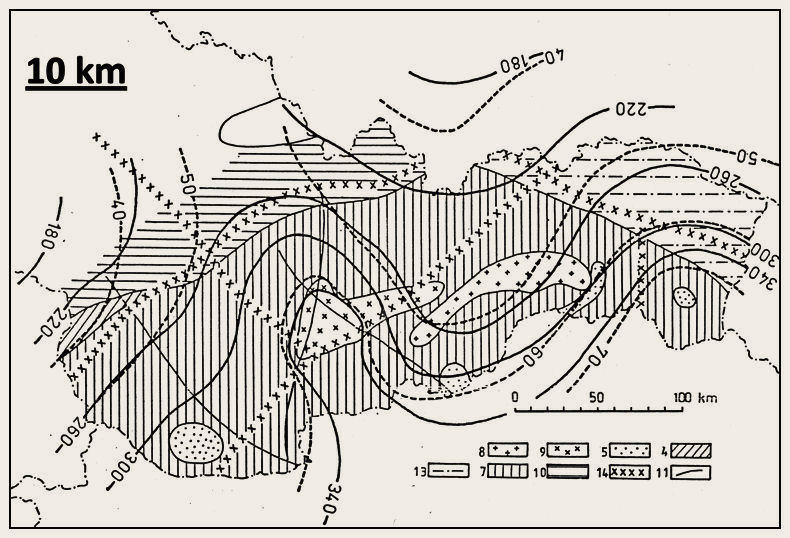
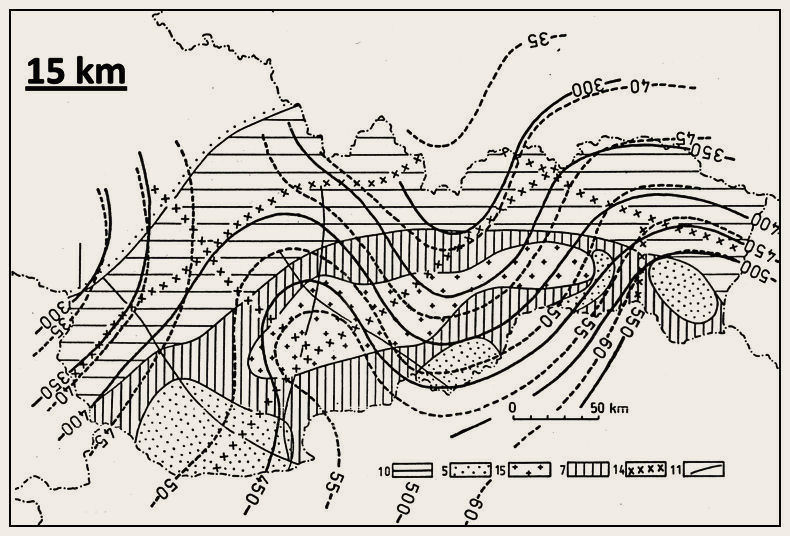
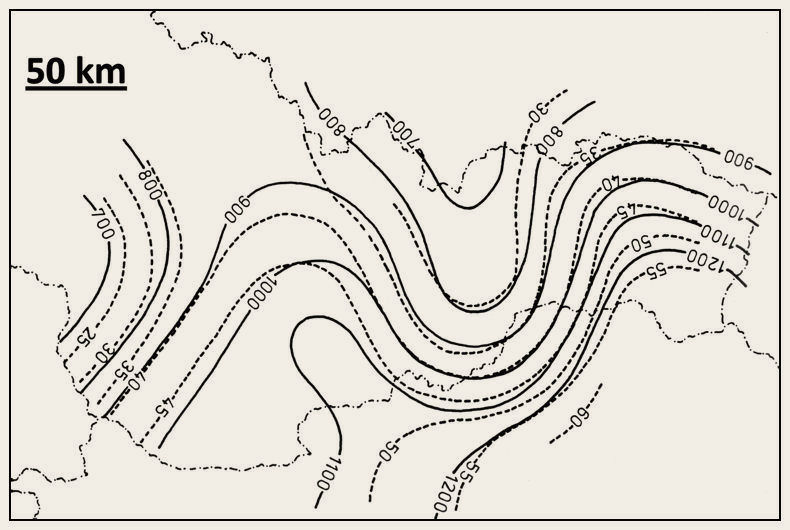
Fig. 1a, 1b, 1c, 1d. Regional character of the temperature field ( thick solid lines with values in °C) and of the vertical component of the heat flow density ( thick dashed lines with values in mW/m2) at the depths of 5, 10, 15 and 50 km. Geological structures: 1- Neogene sediments, 2 - Paleogene flysh, 3 - Klippen Belt, 4 - Inner Carpathian Mesozoic, 5 - basic bodies, 6 - Paleozoic sediments and vulcanites, 7 - crystalline schists and granitoids, 8 - Cretaceous intrusive granitoids, 9 - Neogene intrusive diorites and gabrodiorites, 10 - platform units, 11 - faults, 12 - assumed boundaries, 13 - outher Carpathian flysch, 14 - deep seated faults, 15 - alpine granitoids
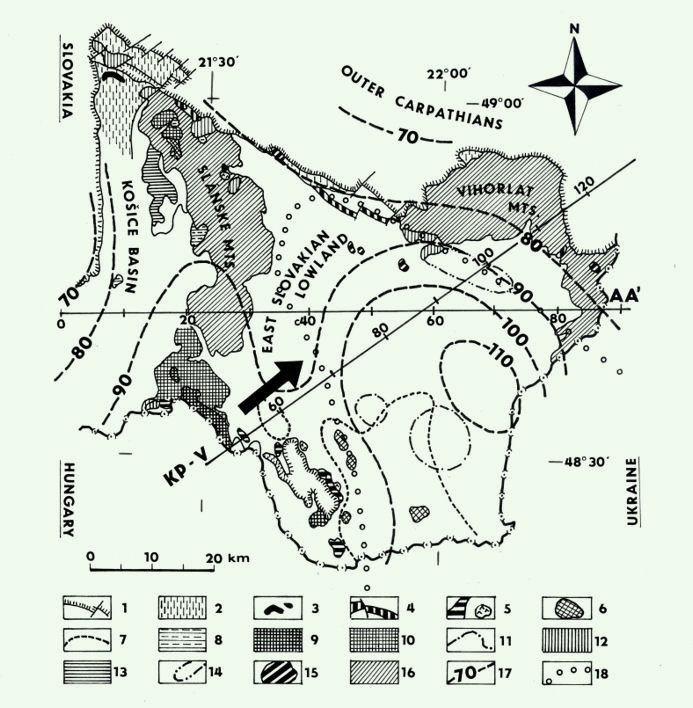
Fig. 2a. Neogene volcanism and the direction of its time migration in the East-Slovakian Basin and position of profiles KP-V and AA'. 1 - pre-Neogene basement, 2 - sediments of the Lower Miocene age, 3 - rhyolite pyroclastic rocks in sediments (Lower Badenian), 4 - rhyolite-pyroclastic rocks in marine sediments (Lower Badenian), 5 - rhyolites and rhyolite pyroclastic rocks (Upper Badenian), 6 - andesites (Upper Badenian) at the surface, 7 - buried andesite complexes (Upper Badenian), 8 - rhyolite tufs (Lower - Middle Sarmatian), 9 - rhyolites (Lower Sarmatian), 10 - andesite stratovulcanoes (Lower Sarmatian), 11 - buried stratovolcanoes (Lower Sarmatian), 12 - intrusions and domes of diorite porphyry (Middle - Upper Sarmatian), 13 - extrusive bodies and breccias of pyroxene-hornblende andesites ( Middle - Upper Sarmatian ), 14 - buried volcanoclastic complexes of pyroxene-hornblende andesites ( Middle - Upper Sarmatian ), 15 - domes and cumulodomes of garnet-bearing plagioclase rhyolites (Lower Sarmatian - Pannonian?), 16 - stratovolcanoes and lava fields formed by andesites, dacite, basaltic andesites (Upper Pannonian - Romanian), 17 - the surface heat flow density isolines; 18 - boundary of the regional gravity anomaly


Fig. 2b, Fig. 2c. Model of temperature field on profile KP-V and AA'. 1 - observed surface heat flow density, 2 - calculated heat flow density, 3 - temperature field isolines in Celsius grade, 4 - boundary of source approximating activation of the geosyncline, 5 - maximal lateral boundaries of the diapir in the lower crust (Middle Badenian), 6 - boundaries of the magmatic body connected with youngest activation (5-6 Ma), 7 - sedimentary filling of the Neogene basin, 8 - neovolcanites, 9 - fractures and deep faults, 10 - presumed upper mantle and diapir boundary from seismic and gravity data
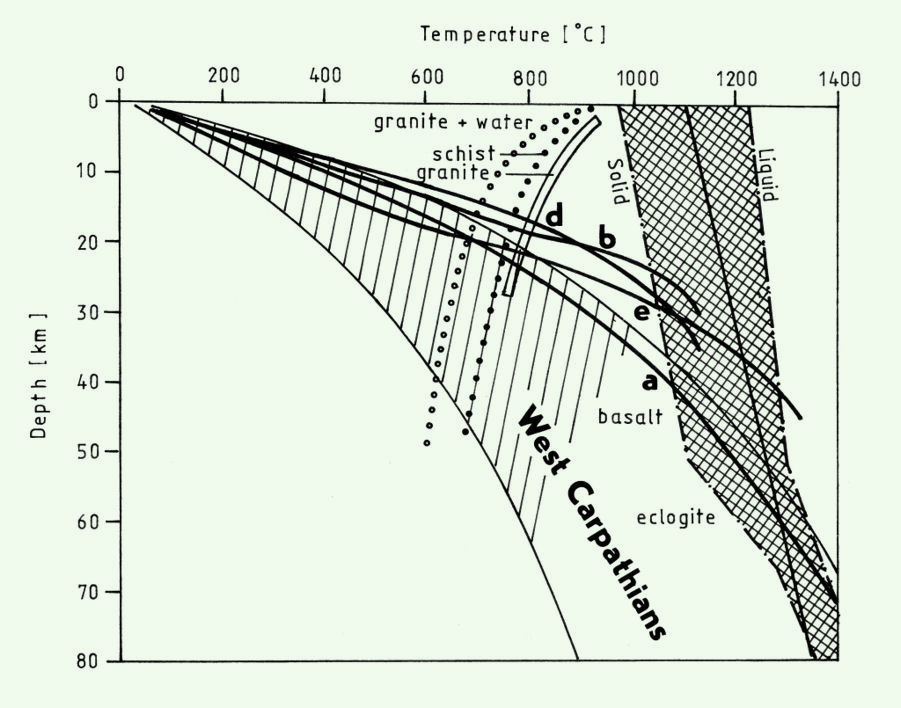
Fig. 2d. Vertical temperature distribution in the central part of the East-Slovakian Basin. e - Eggenburgian, b - Middle Badenian, d - Dacian, a - recent distribution

